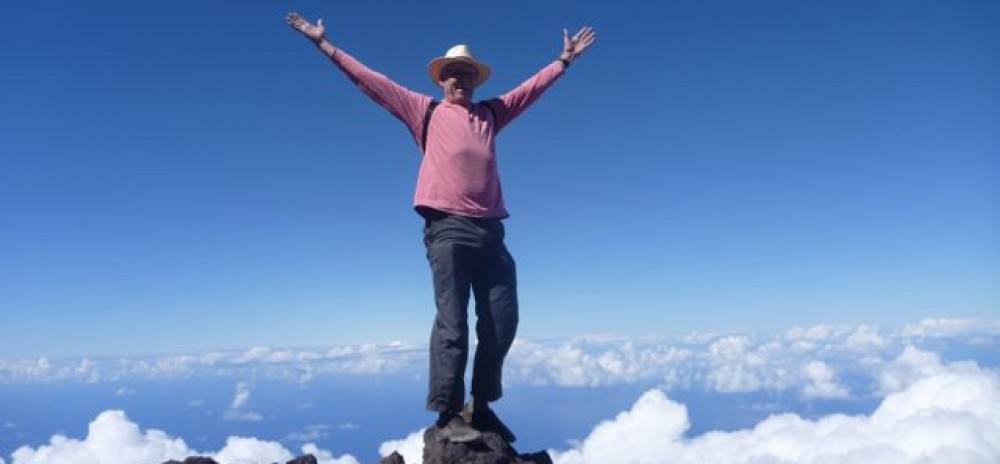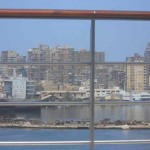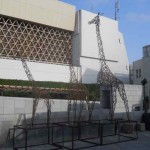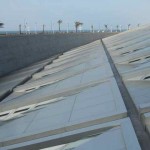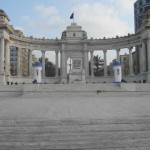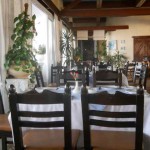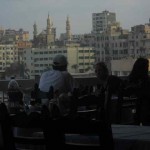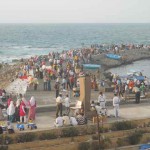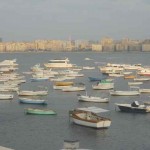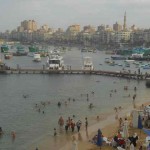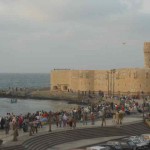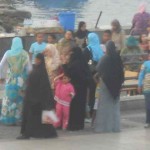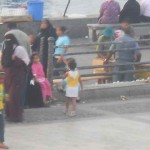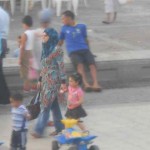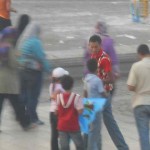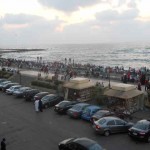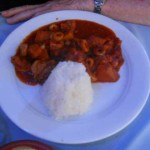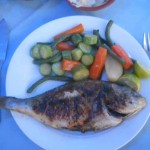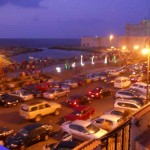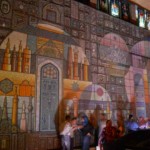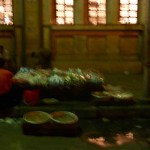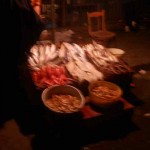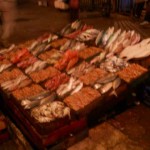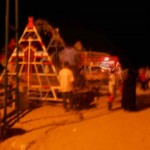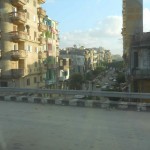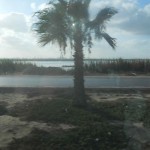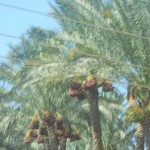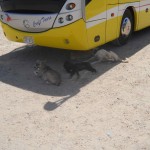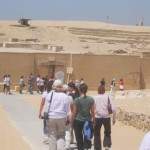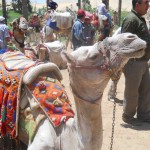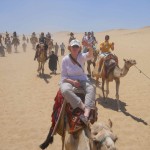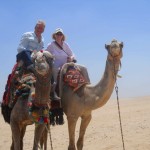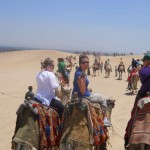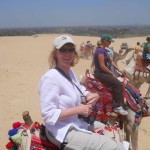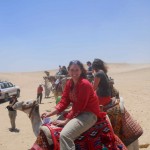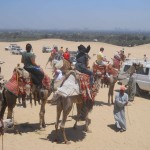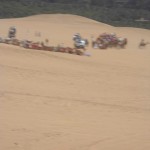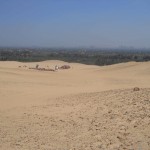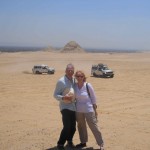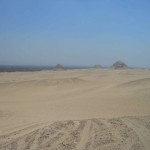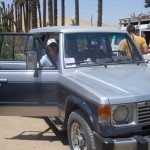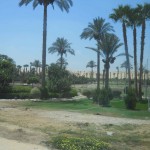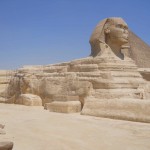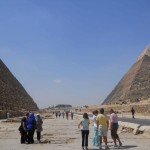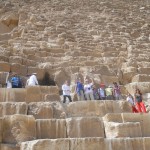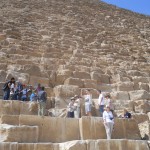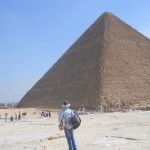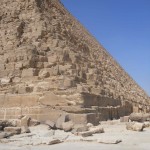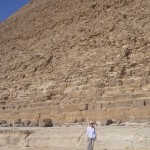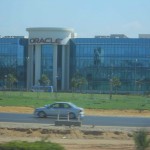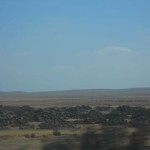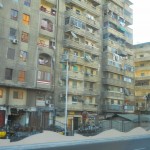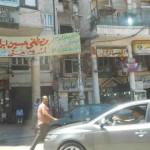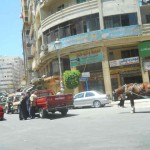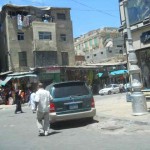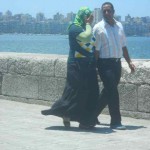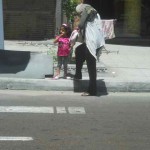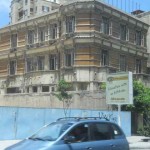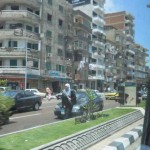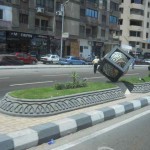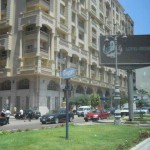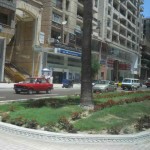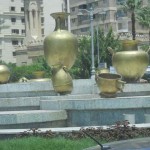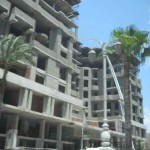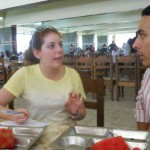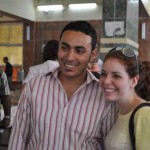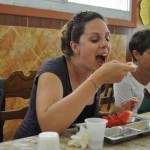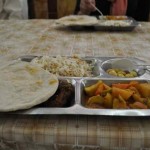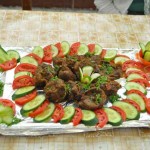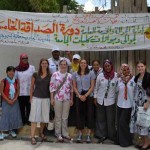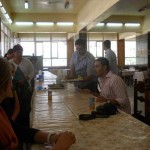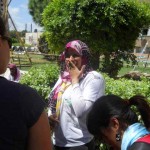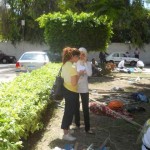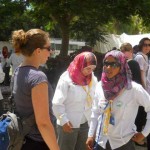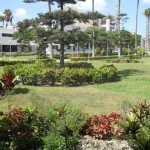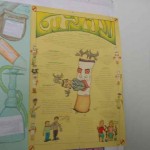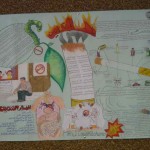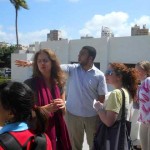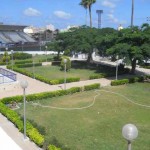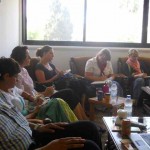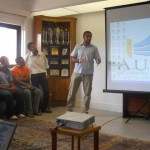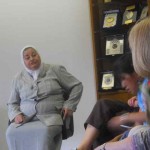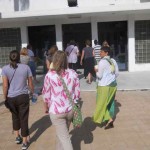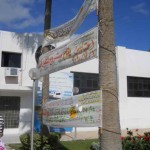July 30th, Friday
This morning was a catch-up time. Kathy was grading papers, and I was sitting outside on deck 7 listening to the Friday call to prayers. They use PA systems in the minarets. Friday noontime prayers are the most important of the week and the call to prayer is more elaborate and prolonged. 1/2 hour of the chanted call followed by a sermon. Some of the mosques broadcast the sermon. I could hear a few pretty well intermittently as the breeze shifted one way or another.
We planned to get back to the Library of Alexandria by 17:00 for a planetarium show. We did get there on time, but the show was sold out! We made a reservation for Saturday’s show and headed back along the corniche. We had made a tentative date to meet up with folks at the “Greek Club” next to the Qaitbay Citadel. We were hoping to find an ATM, get some cash, and grab a taxi. But we couldn’t find an ATM anywhere. Finally, after a long walk, hot and tired, we did see an ATM one block off the corniche, near the Tomb of the Unknown Soldier… and we did get cash, and we did catch a cab the rest of the way.
Cab hiring in many of these ports is a specific art. You have to negotiate a price, with the driver, in advance. You have to make sure you are quoting prices in the same currency, and that the fare is not per person. Experts recommend you exit the cab before paying and pay through the window so if there has been a misunderstanding you can choose to walk away. This worked pretty well for us with few misunderstandings.
The Citadel is on the end of a thin peninsula at one end of the bay. The Greek Club is also on this peninsula and has a view of harbor beaches to the east, and of a waterfront park area to the west. As evening fell, and the city cooled off, families came to hang out near the water. Folks were flying kites, buying balloons for the kids, eating street vendor foods, and taking short rides aboard a few rowboats. There is a small bay with a narrow rocky entrance where the waves create some spray. The boats seemed to take the customers toward this entrance, close enough to get rocked by the waves and hit by some spray, and then back to safety.
None of our tentative fellow diners showed up so we had a peaceful dinner for two. We decided to try to walk back to the ship. It was probably about 1 mile and we “sort-of” knew the way. We walked past a fish market, and through a district with beaches on the right and restaurant-clubs on the left. Lots of people out. Gradually we ran out of major crowded streets and got into an area where it was more difficult to pick a direction. We wound up in a fairly busy very small crossroad and decided to try to catch a cab there. This we did after a short wait.
In each port the folks on the ship give out “green sheets”. A single-page two-sided paper stuffed with critical information such as the number of the consulate, the ships reception, which dean is on duty which days, their phone number…etc. One of the things they put on the green sheet is the location of the ship written in the local language. I typically show the driver this and ask if he can take us there. This driver says yes, but has to slows ask for directions from some guys sitting on a step. That seems to work though and we are on our way. We get back to the ship exhausted.
- Listening to the Friday call to prayer from deck 7
- Giraffe sculpture outside library
- Alexandria Library
- Tomb of the Unknown Soldiers
- The Greek Club
- Sunset over Alexandria
- Evening recreation by the sea
- Old harbor
- Mosaic
- Fish Market
- Playground next to beach
